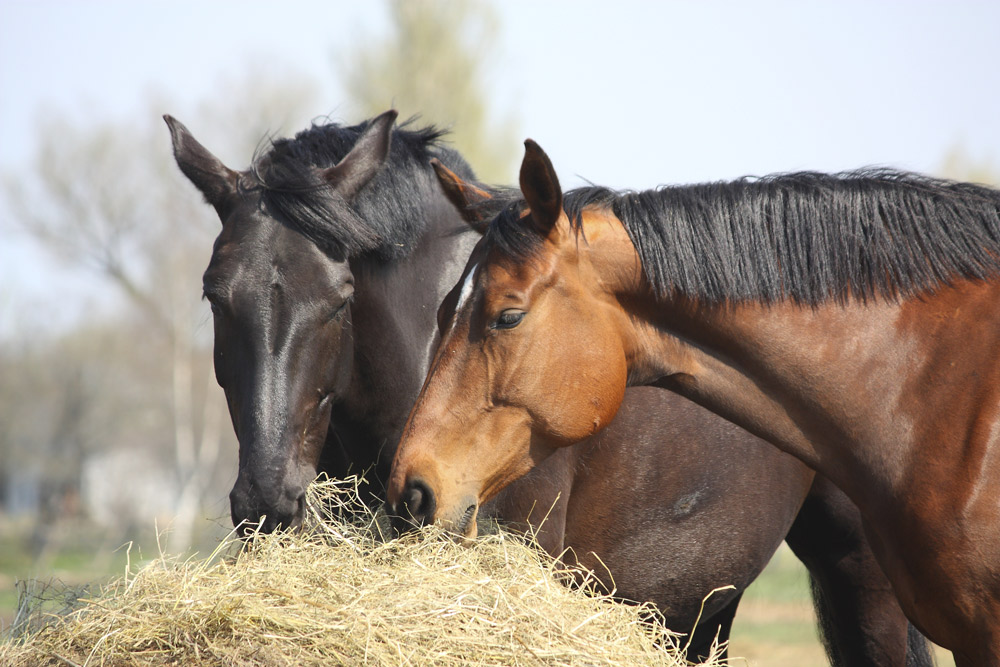Understanding what is in your horse’s forage is the key to developing a good feed program.
Pastures and/or forage crops are the major components of a horse’s diet. Yet most horse owners still focus on grain or supplements in an attempt to maximize health, growth or productivity.
A horse’s forage intake should be anywhere from 1% to 2% of his body weight. This is in dry matter form – pasture is approximately 80% moisture, so much higher amounts are needed. This means that if you have a 500 kg horse at 1.5% he should ingest 7.5 kg of dry matter forage daily. If the hay is 8% protein (i.e. first cut), he should receive 600 grams of protein a day from forage; and if the forage is 12% protein he would receive 900 grams of protein per day.
Three kilograms of grain fed at 12% protein is 360 grams a day from grain, and at 14% protein, the same amount is 420 grams per day.
I am not proposing that protein is the main or only nutrient we should focus on, but many horse owners only concentrate on protein from grain, not from forage.
The Nutrient Requirements of Horses, published by the National Research Council, states the following: a horse working moderately needs a minimum of 768 grams of protein a day. So if you are feeding that low 8% protein hay and expecting work out of your horse, chances are he is depleted. You need to balance all the vitamins, minerals and nutrients in his diet, and unfortunately even our richest pastures, hay or cubes do not always provide everything necessary for the working horse. Once you know what kind of forage you have to work with, you can determine how to best supplement it.
Long Stem Forage Myths
It is a myth that hay cubes are not a good source of long stem fiber for horses – the opposite it true. You can substitute traditional hay with hay cubes on a 1:1 basis. Smaller cubes have less long stem fiber than large cubes, and pellets are not considered long stem fiber.
Hay cubes can provide a solution in situations when you are unable to meet the horse’s needs through traditional pasture or hay. For example, hay cubes may be useful for:
• Respiratory disorders. Hay cubes have minimal dust, especially when offered wet.
• Poor body condition. This can be caused by low nutritive value in hay. Hay cubes are a good caloric source and often higher in digestible energy. Less wastage with hay cubes compared to hay can result in getting more quality forage into your horse.
• Poor teeth. Hay cubes are soft and easily wetted to help horses with dental problems








